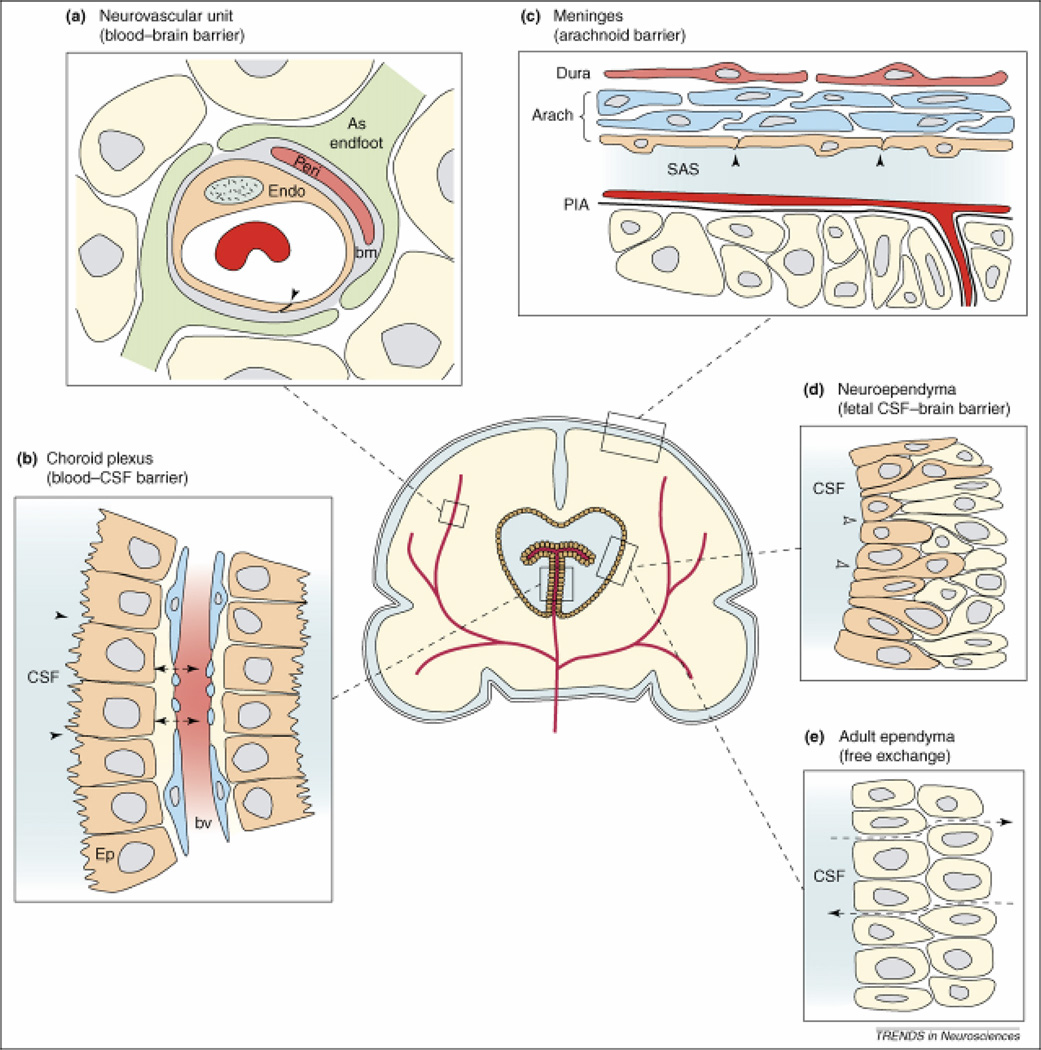Figure 3. Barrier interfaces.
The neurovascular unit (a), blood-CSF barrier (b), and arachnoidal barrier (c) are common between developing and adult brain, whereas fetal neuroependyma (d) differs from adult ependyma (e). (a) Endothelial cells (Endo) have luminal tight junctions (arrowhead) forming the physical barrier of the interendothelial cleft. Outside the endothelial cell is a basement membrane (bm) which also surrounds the pericytes (Peri). Around all these structures are the astrocyctic endfeet processes from nearby astrocytes (As Endfoot). (b) The endothelial cells of choroid plexus blood vessels are fenestrated and form a non-restrictive barrier (arrowheads) between the cerebrospinal fluid (CSF) and blood vessel (BV). The epithelial cells (Ep) have apical tight junctions (small arrows) that restrict intercellular passage of molecules. (c) In the meninges, the blood vessels of the dura are fenestrated and provide little barrier function (not shown); however, the outer cells of the arachnoid membrane (Arach) have tight junctions (arrowheads) and this cell layer forms the physical barrier between the CSF-filled subarachnoid space (SAS) and overlying structures. The blood vessels between the arachnoid and the pial surface (PIA) have tight junctions (not shown). (d) In early development the neuroependymal cells are connected to each other by strap-junctions (small arrows) that are believed to form the physical barrier restricting the passage of larger molecules such as proteins but not smaller molecules such as sucrose. (e) The mature adult ventricular ependyma does not restrict the exchange of molecules. Reproduced, with permissions, from Ref. 162.

